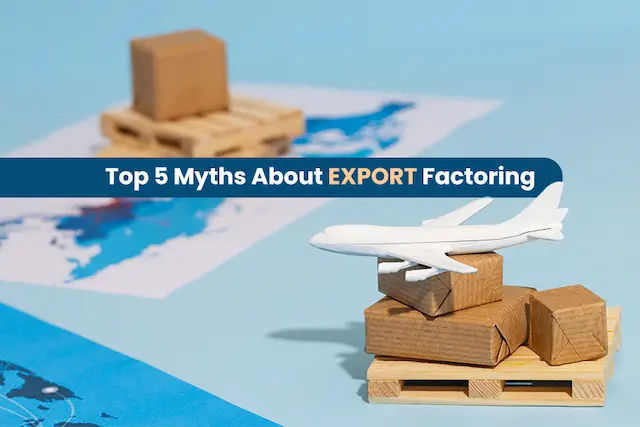The Interest Equalisation Scheme (IES) is a government initiative that aims to help Indian exporters by reducing the cost of borrowing. Introduced on April 1, 2015, the scheme provides financial relief to exporters by offering a subsidy on the interest rates charged on export-related credit. This helps exporters by lowering their credit costs, which can be particularly useful when global demand is low or when exporters face long credit cycles.
In this blog, we will explain the Interest Equalisation Scheme in simple terms and discuss how it benefits Indian exporters, especially small and medium-sized enterprises (SMEs) and micro, small, and medium enterprises (MSMEs).
What is the Interest Equalisation Scheme?
The Interest Equalisation Scheme, also known as the Interest Subvention Scheme, is a financial assistance program introduced by the Indian government to support exporters. When exporters borrow money to fund their production or shipment of goods, they often have to pay high interest rates. This scheme helps by lowering these rates, making it cheaper for exporters to get the money they need to operate.
Initially, the scheme offered a 3% reduction in interest rates for eligible exporters. In 2018, this was increased to 5% for MSME exporters, while large manufacturers and merchant exporters continued to receive a 3% reduction.
Why Was the Scheme Introduced?
Exporters face many challenges, such as fluctuating global demand, long credit cycles, and increasing production costs. These challenges make it difficult for them to compete internationally, especially when their borrowing costs are high. By reducing the interest rates on loans, the Interest Equalisation Scheme aims to make Indian products more competitive globally, enabling exporters to offer better prices and increase their sales.
Additionally, the scheme focuses on labor-intensive sectors like handicrafts, garments, and food processing, which are crucial for job creation in India.
Extension of the Scheme During COVID-19
The Interest Equalisation Scheme was originally launched for a five-year period. However, during the COVID-19 pandemic, the Indian government extended the scheme as part of its relief measures for exporters. This extension lasted from April 1, 2020, to March 31, 2021. The extension allowed exporters to continue benefiting from lower interest rates, helping them stay afloat during the economic downturn caused by the pandemic.
Key Features of the Interest Equalisation Scheme
Here are the key aspects of the scheme that exporters should know:
- Interest Rate Reduction: The scheme offers a 5% reduction in interest rates for MSME exporters and a 3% reduction for large manufacturers and merchant exporters.
- Coverage of Various Sectors: The scheme covers several sectors, especially those that are labor-intensive and have the potential for job creation. Some of these sectors include processed agricultural products, handicrafts, garments, leather goods, and more.
- Reimbursement Process: Banks provide exporters with the benefit of reduced interest rates upfront. They then claim reimbursement from the Reserve Bank of India (RBI) for the interest subsidy. The banks are required to submit an auditor’s certificate to ensure that the claims are made according to the scheme’s guidelines.
- Eligibility for Exporters: The scheme is available to all MSME exporters and some large manufacturers. To be eligible, exporters must ensure that the goods they export meet the criteria set under the Rules of Origin (Non-Preferential) of the Foreign Trade Policy 2015-20. This means that the goods must undergo significant processing in India to qualify as “originating from India.”
Who Can Avail the Interest Equalisation Scheme?
The scheme is primarily targeted at MSME exporters, but it also covers large manufacturers and merchant exporters under specific conditions. Here’s how different groups can benefit:
- MSME Exporters: MSMEs are eligible for a 5% interest rate reduction on their pre- and post-shipment credit. This is particularly beneficial for small exporters who often face tight margins and have less access to credit.
- Large Manufacturers and Merchant Exporters: These exporters can receive a 3% reduction in interest rates. Merchant exporters play a key role in facilitating exports, especially for smaller manufacturers. Their inclusion in the scheme helps reduce their credit costs and promotes export growth.
Also Read: International Factoring for Large Manufacturers
Sectors Covered Under the Scheme
The Interest Equalisation Scheme covers a wide range of sectors, particularly those that are labor-intensive and have high potential for employment generation. Some of the key sectors include:
- Processed agricultural and food items
- Handicrafts and handloom products
- Handmade carpets (including silk carpets)
- Coir and coir products
- Raw jute and yarn
- Readymade garments and fabrics
- Toys and sports items
- Paper and stationery
- Cosmetics and toiletries
- Leather goods, including footwear
- Ceramic products
- Glass and glassware
In addition, MSMEs that manufacture medical instruments, optical frames, auto machinery, electrical equipment, and engineering products are also eligible for the scheme.
How Does the Interest Equalisation Scheme Work?
The scheme is designed to be simple for exporters to access. Here’s how it works:
- Application Process: Exporters don’t need to apply for the scheme separately. When an eligible exporter takes a loan from a bank for export purposes, the bank automatically applies the reduced interest rate.
- Interest Rate Reduction: The bank charges the exporter a reduced rate of interest based on the eligibility criteria (5% for MSMEs and 3% for large exporters). The exporter receives this benefit upfront when the loan is disbursed.
- Bank Reimbursement: After providing the benefit to the exporter, the bank claims reimbursement from the RBI. This claim must be supported by an auditor’s certificate to ensure that the bank has followed the scheme’s guidelines correctly.
- Duration of the Benefit: The interest rate reduction is available for the period between the loan disbursement date and the loan repayment date, or until the loan becomes overdue.
Benefits of the Interest Equalisation Scheme
The Interest Equalisation Scheme offers several benefits to Indian exporters:
- Lower Credit Costs: By reducing the interest rates on export-related loans, the scheme lowers the overall cost of borrowing for exporters. This allows them to allocate more funds to production and marketing, helping them expand their businesses.
- Improved Competitiveness: With reduced borrowing costs, exporters can offer more competitive prices to international buyers. This makes Indian products more attractive in global markets, boosting export growth.
- Support for MSMEs: The scheme is particularly beneficial for MSME exporters, who often struggle with access to affordable credit. By providing a 5% interest rate reduction, the scheme helps these businesses stay competitive and grow.
- Job Creation: By targeting labor-intensive sectors like handicrafts, garments, and food processing, the scheme supports job creation in India. This is especially important in rural areas, where many of these industries are based.
Also Read: Best Credit Facilitation Schemes For MSMEs In India
Conclusion
The Interest Equalisation Scheme is an essential tool for supporting Indian exporters, particularly MSMEs. By reducing the cost of borrowing, the scheme helps exporters remain competitive in global markets, even in challenging economic times. With its focus on labor-intensive industries, the scheme also contributes to job creation and economic growth in India.
Exporters should take full advantage of this scheme to lower their credit costs and improve their business prospects. By staying informed about the eligibility criteria and benefits, they can make the most of this valuable government initiative.
Also Read: Business Loan Interest Rate




